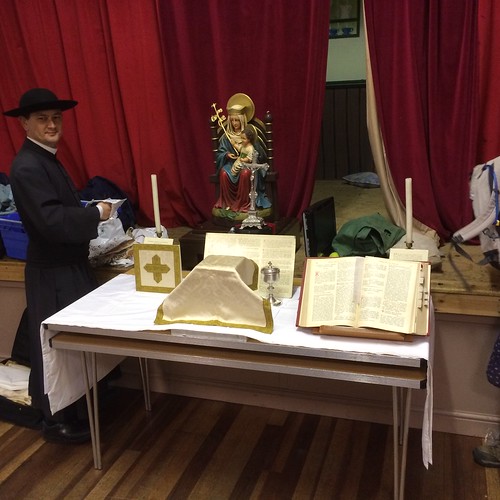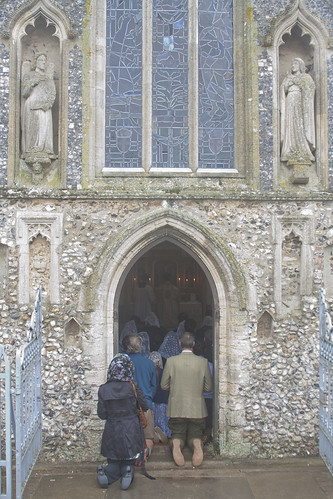Aylesford is an important shrine, a great example of the reconstruction of Catholic England, that was going on right into the 1950s.
Labels
- Bishops
- Chant
- Children
- Clerical abuse
- Conservative critics of the EF
- Correctio Filialis
- FIUV Position Papers
- Fashion
- Freemasonry
- Historical and Liturgical Issues
- Islam
- Liberal critics of the EF
- Marriage & Divorce
- Masculinity
- New Age
- Patriarchy
- Pilgrimages
- Pope Francis
- Pro-Life
- Reform of the Reform
- Young people
Tuesday, September 29, 2015
LMS Pilgrimage to Aylesford, Sat 3rd October
This is the first time, certainly in recently years, that we've been able to arrange a High Mass, rather than a Missa Cantata. The celebrant will be Fr Marcus Holden. The music, provided by Matthew Schellhorn and his group Cantus Magnus, promises to be a treat as well.
Monday, September 28, 2015
Dietrich von Hildebrand on beauty, 4: Raising hearts to God
 |
| A.W. Pugin's stunning chapel at St Edmund's College, Ware, draws the eye, and thus the attention and the heart, to the centre of the Sacrifice of the Mass. |
Concluding this series of quotations from Dietrich von Hildebrand's Trojan Horse in the City of God, mostly from chapter 26, a final section addresses the question of the role of beauty lifting our hearts to God: perhaps a hackneyed phrase, but for something which, surely, we all feel. It is a theme taken up in recent times by Pope St John Paul II and Pope Benedict XVI, who talk of the via pulchritudinis, the Way of Beauty, as a form of evangelisation.
Beauty helps form us in the Faith and helps us to become holy. If we take this idea seriously, we will concur with the attitude of the Liturgical Movement which wanted to rid the liturgy and devotions of aesthetic elements which struck the wrong note, in the first half of the 20th century: most obviously, sentimental hymns and art. Far, far worse, however, is the invasion of our churches by various forms of pop music in more recent decades. It is not just a matter of giving the audience aesthetic pleasure, but of engaging with them in the right way and to the right end: this brings us back to the earlier arguments in this series, against aestheticism and on the question of beauty as an adequate expression of worship, serving worship and not distracting us from it to its own, alien, theme.
Sunday, September 27, 2015
A new liturgical gesture - the camera?
Seeing these images floating around the internet in connection with Papal liturgies in the USA is pretty depressing. It is not as if these priests would not be able to access far better photographs and videos after the event, taken by professionals from specially selected locations. The photos or videos they are taking don't even feature themselves in these cases - the ones that do, of course, are even more depressing. (Fr Stephen Paolino: a name to live forever on Istagram, in infamy.)
What is it we are seeing? I suppose these men live in a society where the social media is ubiquitous, where family events go up instantly onto Facebook and so on. (Where I live, the mobile signal isn't good enough.) Can't they see the difference between a barbecue with cousin Bob and a Mass with the Holy Father?
Clearly, they can't. Their sense of the seriousness of the liturgy has disappeared, if it ever existed. Even when the solemnity of the occasion is increased to the highest possible pitch, with the Pope himself celebrating Mass in a vast cathedral with bishops and all the bells and whistles, it makes no difference. They have, to be fair to them, been trained to treat the liturgy as much as possible as something where the rules of ordinary life still obtain, rather than something special and different.
To meet the ordinary man and woman the liturgy must be ordinary. To transform ordinary life, the liturgy must be as like as possible to ordinary life. This is an ideology which would have dominated many of the seminaries these men attended in the 1970s and 1980s, and since. It is one of those counter-intuitive things which are completely wrong.
The Holy Father's liturgies in the USA, as elsewhere, are undeniably special occasions. Lots of people turn out for them; they get lots of coverage. Are they going to be special in a religious way, in a prayerful way, in a way connected with the worship of God, or are they going to be special in a Holywood way, a 'celebrity' way, a way like events are special because you get to see Clint Eastwood in the flesh?
Support the work of the LMS by becoming an 'Anniversary Supporter'.
Saturday, September 26, 2015
Friday, September 25, 2015
'Call Mission Journey': Looking into the Abyss
 For an astounding example of self-flagellation, the results of the survey commissioned by the Bishops of England and Wales on the family, The Call, the Mission and the Journey, takes some beating.
For an astounding example of self-flagellation, the results of the survey commissioned by the Bishops of England and Wales on the family, The Call, the Mission and the Journey, takes some beating.From a statistical point of view the survey is completely meaningless. Responses to a series of questions have been provided by a self-selecting group of people, partly online and partly offline. These have then been cherry-picked and collated by some functionary of the Bishops' Conference, and the result, with a little commentary, weighing in at 17,500 words, has been plonked on the web like an undigested potato.
Nevertheless, reading through it one hears the authentic voice of... middle class liberal Catholics aged between 50 and 70. We can be fairly specific about the age because almost all the references to children are to grown-up children and grandchildren. These are, in any case, almost the only people who would bother filling in a questionnaire of this sort, though many of them seem pretty annoyed about it.
'A number are critical of the way the questionnaire as a whole and this question [6] in particular were framed'
(Note the illiteracy, or at least the haste, of the functionary collating the responses.)
This splinter of the Church's demographic appears to be held in awe by the Bishops' Conference. Their opinions are apparently regarded as some sort of oracle, and the 'Bishops' response' (what bishops, I wonder?) is not exactly robust. It consists of a couple of pages of quotations from Pope Francis, a prayer, and a list of credal statements about marriage and the family which manages not to mention either indissolubly or sanctifying grace. Their approach appears to be inspired by Oscar Wilde:
'Ignorance is like a delicate exotic fruit; touch it and the bloom is gone.
Dietrich von Hildebrand on beauty, 3: Irrelevance
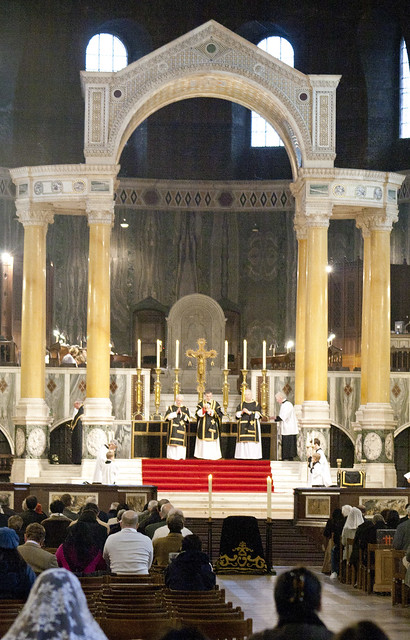 |
| The vast baldachino of Westminster Cathedral, built to frame and emphasise the central rites of the Mass. |
He argues that while it may not be necessary, it does not follow that it is not significant.
First, the adequate expression of our worship requires beauty.
Second, beauty in the liturgy lifts our souls to God.
This post is concerned with the first of these ideas; the second will be expounded in the next post. The first is the less familiar idea of the two, but it is an important one. Public worship is by definition a public act; it must involve words and rites of some kind: it must find some kind of expression, or it is not happening at all. What kind of expression should it have? Something ugly, plain, utilitarian or functionalist? No: Catholic liturgy, like the liturgies of all traditional religions, seeks its expression in the most beautiful fashion possible.
In this way, beauty is appropriate to the liturgy because it is called for by the greatness of the liturgy itself, and the God the liturgy serves. This is sufficient justification. Nothing we can do will be too good, too beautiful, to give expression to our worship.
Thursday, September 24, 2015
Is singing in Latin wrong?
 |
| Panis angelicus, for singing in Latin, with a Japanese translation. |
According to the Universe, the priest, Fr Carmelo Tanti, said that is wasn't right for something to be sung which the people wouldn't understand.
The Times of Malta is incredulous, and it appears that Archbishop Scicluna of Malta agrees with them.
A while ago I wrote a post on this blog about a Pastoral Letter from Archbishop Scicluna's predecessor, Archbishop Cremona, which appeared to be a veiled attack on the Traditional Mass. Let us hope that things look up under Archbishop Scicluna.
Support the work of the LMS by becoming an 'Anniversary Supporter'.
Dietrich von Hildebrand on beauty, 2: Evangelical poverty
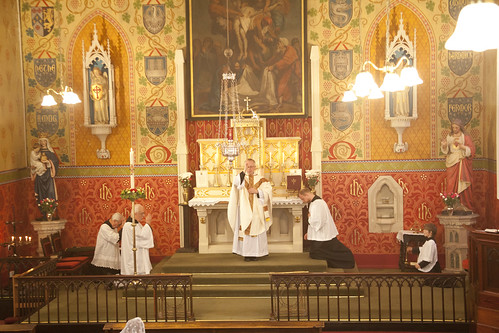 |
| The tiny and rather plain Oxfordshire church of Holy Trinity, Hethe, was extravagantly painted for its centenary in 1930, making it one of the wonders of the Birmingham Archdiocese. |
That there is no such opposition is clear from the example of people like St Francis of Assisi and St Jean Vianney. They displayed evangelical poverty but remained deeply appreciative of beauty in the liturgy. Some liberals simply can't understand this and attempt to sweep this fact under the carpet, but a fact it remains. Vianney used to buy expensive silks from Lyon for liturgical use: Lyon was then the centre of the silk trade in France. On the other hand, the comfortable air-conditioned offices so beloved of our liberal masters in government as in the Church really are opposed to evangelical poverty.
It is not really so difficult to understand. Stripping the church of its furnishings and installing carpets and comfortable chairs is about making us comfortable and being careless about the beauty which should be offered to God. The more traditional approach of making do with hard pews and drafts but lavishing silk and gilding on the sanctuary is about making do with less for ourselves and honouring God. Does it really need to be said that it is the latter which is in accord with evangelical poverty, and not the former?
Wednesday, September 23, 2015
Dietrich von Hildebrand on beauty, 1: Aestheticism
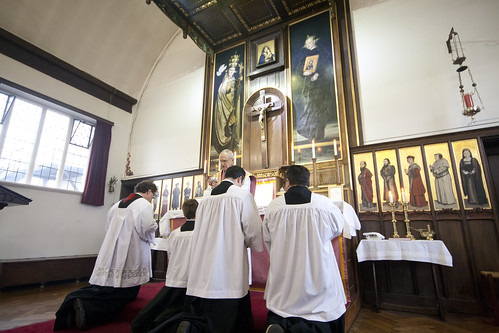 |
| The small church of SS Gregory & Augustine in Oxford, with the recently installed paintings the Catholic artist James Gillick. |
He addresses a series of arguments against the importance of beauty in the liturgy, church buildings and so on. The first of these is the accusation of 'aestheticism': that those who value beauty are guilty of this error. So, what is aestheticism? Hildebrand defines it: it is an appreciation of beauty detached from the meaning of the beautiful object: in the case of the liturgy, it is an appreciation of the architecture, vestments, music, poetry and so forth without reference to the theological and moral content which these things are seeking to convey to viewer and auditor. There is such a thing as 'aestheticism', it is bad, but those attached to the Traditional Mass can make it clear that they are not guilty of it. It is, after all, perfectly obvious that that as a movement we care very deeply about the content, the meaning, of the beautiful things found in the liturgy. We aren't just as happy listening to, say, a melodious Arian hymn sung with skill, as Palestrina. The theology of an artefact is, for us, inseparable from our appreciation of its aesthetic qualities.
Tuesday, September 22, 2015
LMS Pilgrimage to Aylesford, 3rd October
 Latin Mass Society Pilgrimage to Aylesford, the shrine of Our Lady of Mount Carmel, the home of the Brown Scapular.
Latin Mass Society Pilgrimage to Aylesford, the shrine of Our Lady of Mount Carmel, the home of the Brown Scapular. Saturday 3rd October, High Mass at 1.30pm, celebrated by Fr Tim Finigan in the Relic Chapel
The annual LMS pilgrimage to Aylesford Priory will take place on Saturday 3 October 2015.
Schedule for the day:
12:00 Arrival with picnic lunch in the grounds or café
12:30 Confessions
13:30 Solemn Mass (Votive Mass of the Blessed Virgin Mary)
Sacred Ministers: Fr Marcus Holden, Fr Timothy Finigan, Fr Gabriel Diaz Patri
15:00 Spiritual Conference: Fr Finigan
15:45 Enrolment in the Brown Scapular by Fr Marcus Holden
16:30 Vespers and Benediction12:00 Arrival with picnic lunch in the grounds or café
12:30 Confessions
13:30 Solemn Mass (Votive Mass of the Blessed Virgin Mary)
Sacred Ministers: Fr Marcus Holden, Fr Timothy Finigan, Fr Gabriel Diaz Patri
15:00 Spiritual Conference: Fr Finigan
15:45 Enrolment in the Brown Scapular by Fr Marcus Holden
Coach from London: booking required.
info@lms.org.uk; 020 7404 7284
Music for Mass will be polyphonic, provided by Cantus Magnus:
Guillaume de Machaut (ca. 1300 – 1377): Messe de Nostre Dame
Guiallume Dufay (ca. 1397 – 1474): Ave Maris Stella
Pérotin (fl. ca. 1200) : Beata viscera
Aylesford, an ancient Carmelite house re-established in modern times, is a remarkable place, and this pilgrimage is highly recommended. See my report from last year, and more photos.
To get to Aylesford Priory (‘The Friars’) from the M20, leave at Junction 5, drive SOUTH and turn right onto the A20, right again onto Halls Road to Aylesford. Drive through Aylesford and follow the signs.
View Larger Map
Monday, September 21, 2015
LMS Pilgrimage to Rome
Sunday, September 20, 2015
Fr de Malleray in St Mary's, Ryde
 The Latin Mass Society, through its Local Representative, does its best to keep the lamp of the Traditional Mass alight in every corner of the country. Every location has its own difficulties, its own opportunities, and its own Catholic history. The Isle of Wight, with a significant population but cut off from the rest of the country, exemplifies this. The Local Representative, Peter Clark, recently helped to organise a visit to the island by Fr Armand de Malleray FSSP. This report is from him.
The Latin Mass Society, through its Local Representative, does its best to keep the lamp of the Traditional Mass alight in every corner of the country. Every location has its own difficulties, its own opportunities, and its own Catholic history. The Isle of Wight, with a significant population but cut off from the rest of the country, exemplifies this. The Local Representative, Peter Clark, recently helped to organise a visit to the island by Fr Armand de Malleray FSSP. This report is from him.Tuesday, 8th September marked the Feast of the Nativity of Our Lady. It was also the Patronal Feast of Quarr Abbey. Like the Medieval Cistercian monastery, the present Benedictine abbey is dedicated to Our Lady of Quarr. This day also marks the anniversary of the reception of the Countess of Clare (foundress of St. Mary’s Church) into the Catholic Church. She was received in St. Peter’s Basilica in Rome in 1841. When she returned to Ryde she built St. Mary’s in Ryde High Street within five years. The feast also marked the anniversary of the first Mass in our beautiful Lady Chapel (at the time, unfinished) in 1893.
Saturday, September 19, 2015
Historic Mass in Snave, 26th September
On Saturday 26th September Fr Marcus Holden will celebrate the first Mass since the Protestant Reformation in the medieval 'marsh church' of St Augustine's, Snave.
The address is Snave, Ashford, Kent TN26 2QT: click for a map.
Friday, September 18, 2015
What will we make of quickie annulments?
Here's another problematic aspect of the annulment reform.
Every now and then I hear some one has married following an annulment. I think, I expect most Catholics think, 'well, I'm glad they sorted that out properly'.
If someone told us of the circumstances of the annulment, and it sounded terribly dodgy, I would still try very hard not jump to the conclusion that the second marriage was in reality adulterous. I would say to myself: 'I don't have all the facts, I was not the judge in the tribunal.'
In a few years time we are all going to encounter cases of people who have had 'quickie' annulments. Assuming the reform proceeds, and until it is reversed, I suspect that few people will find it necessary to go through the 'ordinary' procedure. That is the way in the post-Conciliar Church: the exception is the rule. This appears to be the plan: the Holy Father himself has said the reform aims to help not just a few people at the margins, but rather -
"The enormous number of faithful who, despite wanting to look after their conscience, too often are turned aside by the juridical structures of the Church.”
Now when in a few years time we encounter a person who has had an annulment, we won't be able to quiet any misgivings by telling ourselves that it did at least go in front of a panel of canonical experts for serious discussion. Instead, what will we do? Will we just roll our eyes?
One of the consequences of the reform is that couples whose marriages really were invalid will be placed in the same category as any number of couples whose marriages have been annulled without any serious consideration. All of them, then, will be unable to get married again in a way which is genuinely publicly recognised. When they tell faithful Catholics they are licitly remarried, they will see rolling eyes.
This is very unjust for people who have, in some cases through no fault of their own, gone through the trauma of an invalid marriage and separation. But it won't be the fault of the people who roll their eyes; it will be the fault of the people in authority who refuse to consider petitions for annulment seriously, on their merits.
What we are going to end up with is a category of licit 'second class marriage': people of whom we say 'oh they remarried after an annulment.' It will be as if the Church were to recognise, alongside marriage, concubinage. The perception of the reality and indissolubility of first marriages will also be undermined, but nothing like as much as the reality of second 'marriages' following a quickie 'annulment'.
A second-class annulment will give couples only a second-class marriage.
The couples celebrating the possibility of 'getting married in the Church' after years of living in an 'uncanonical' situation will be the first to notice, sadly, the hollowness of their victory.
Support the work of the LMS by becoming an 'Anniversary Supporter'.
Every now and then I hear some one has married following an annulment. I think, I expect most Catholics think, 'well, I'm glad they sorted that out properly'.
If someone told us of the circumstances of the annulment, and it sounded terribly dodgy, I would still try very hard not jump to the conclusion that the second marriage was in reality adulterous. I would say to myself: 'I don't have all the facts, I was not the judge in the tribunal.'
In a few years time we are all going to encounter cases of people who have had 'quickie' annulments. Assuming the reform proceeds, and until it is reversed, I suspect that few people will find it necessary to go through the 'ordinary' procedure. That is the way in the post-Conciliar Church: the exception is the rule. This appears to be the plan: the Holy Father himself has said the reform aims to help not just a few people at the margins, but rather -
"The enormous number of faithful who, despite wanting to look after their conscience, too often are turned aside by the juridical structures of the Church.”
Now when in a few years time we encounter a person who has had an annulment, we won't be able to quiet any misgivings by telling ourselves that it did at least go in front of a panel of canonical experts for serious discussion. Instead, what will we do? Will we just roll our eyes?
One of the consequences of the reform is that couples whose marriages really were invalid will be placed in the same category as any number of couples whose marriages have been annulled without any serious consideration. All of them, then, will be unable to get married again in a way which is genuinely publicly recognised. When they tell faithful Catholics they are licitly remarried, they will see rolling eyes.
This is very unjust for people who have, in some cases through no fault of their own, gone through the trauma of an invalid marriage and separation. But it won't be the fault of the people who roll their eyes; it will be the fault of the people in authority who refuse to consider petitions for annulment seriously, on their merits.
What we are going to end up with is a category of licit 'second class marriage': people of whom we say 'oh they remarried after an annulment.' It will be as if the Church were to recognise, alongside marriage, concubinage. The perception of the reality and indissolubility of first marriages will also be undermined, but nothing like as much as the reality of second 'marriages' following a quickie 'annulment'.
A second-class annulment will give couples only a second-class marriage.
The couples celebrating the possibility of 'getting married in the Church' after years of living in an 'uncanonical' situation will be the first to notice, sadly, the hollowness of their victory.
Support the work of the LMS by becoming an 'Anniversary Supporter'.
Thursday, September 17, 2015
Michael Voris on the SSPX: not charitable, not true
The announcement by Pope Francis that priests of the Society of Pius X (SSPX) will be given faculties to hear confessions during the 'Year of Mercy' has stimulated Michael Voris to reiterate once again his view that the SSPX are in schism. I've mentioned Voris positively over the years on this blog, and the current issue of the Latin Mass Society's magazine, Mass of Ages, includes an interview with him, but I have to disagree with him about this, which is far from being a merely theoretical issue.
The reality is that the exact legal status of the SSPX has always been somewhat ambiguous, and as does happen in real life, it is an ambiguity which has been deliberately maintained by both sides to facilitate a positive evolution of the relationship. It is not for Michael Voris to insist on what successive Roman officials have refused to insist on.
Not exactly. He said that Archbishop Lefebvre's ordination of four bishops without the consent of the Holy See was 'a schismatic act', and later in the document pointed out the penalty - excommunication - for 'formal adherence to schism'.
The reality is that the exact legal status of the SSPX has always been somewhat ambiguous, and as does happen in real life, it is an ambiguity which has been deliberately maintained by both sides to facilitate a positive evolution of the relationship. It is not for Michael Voris to insist on what successive Roman officials have refused to insist on.
Voris tells us that 'In 1988, Pope St. John Paul called their movement a schism'
Not exactly. He said that Archbishop Lefebvre's ordination of four bishops without the consent of the Holy See was 'a schismatic act', and later in the document pointed out the penalty - excommunication - for 'formal adherence to schism'.
Wednesday, September 16, 2015
Annulment reform and the Kasper proposal
 Back in the innocent days we had discussing Cardinal Kasper's proposals, the suggestion was that people be allowed to receive Holy Communion despite living in uncanonical situations. He said, in an interview, that he thought reform of the process of annulment wouldn't make a difference to all that many people. Instead, we had to take a different view of the new, adulterous, unions, which people who had left perfectly valid first marriages had contracted. (My post about it.) He said:
Back in the innocent days we had discussing Cardinal Kasper's proposals, the suggestion was that people be allowed to receive Holy Communion despite living in uncanonical situations. He said, in an interview, that he thought reform of the process of annulment wouldn't make a difference to all that many people. Instead, we had to take a different view of the new, adulterous, unions, which people who had left perfectly valid first marriages had contracted. (My post about it.) He said:And the second is not a marriage in the same sense, but there are elements of it—the partners take care of one another, they are exclusively bound to one another, there is an intention of permanence, they care of children, they lead a life of prayer, and so on. It’s not the best situation. It’s the best possible situation. Realistically, we should respect such situations, as we do with Protestants. We recognize them as Christians. We pray with them.
Part of the motivation for this was, no doubt, a naive belief that the annulment process could only be twisted so far, but another, and perhaps a more powerful one, is the observation that many of the couples in illicit second unions do not want an annulment.
This may seem surprising, but it is true. I've encountered this attitude myself; here is Mgr Basil Loftus about it (criticising 'the often negative and harmful purported 'solution' of marriage nullity.'), and here is Cristina Odone (angered by 'the practice of annulment, where you could effectively buy the Church’s collusion in untying the marital knot.')
Juventutem Mass for Persecuted Christians 25 Sept with Fr Julian Large and Dr John Newton of ACN
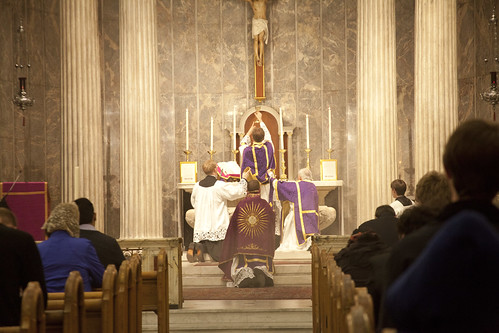
The series of Juventutem Masses, at 7:30pm on the last Friday of each month in St Mary Moorfields continues; these are always sung, usually with chant, and supported by the Latin Mass Society.
Once a quarter the LMS and the FIUV provide special sponsorship to make possible a polyphonic Mass, for the intention of persecuted Christians around the world. The next of these is taking place on Friday 25th September, and will be celebrated by the Provost of the London Oratory, Fr Julian Large.
Afterwards, Dr John Newton of Aid to the Church in Need will give a talk.
Mass will be accompanied by Matthew Schellhorn and his Cantus Magnus group.
The Mass and the talk are open to all; the 'social' afterwards is restricted to the age-group 16-35.
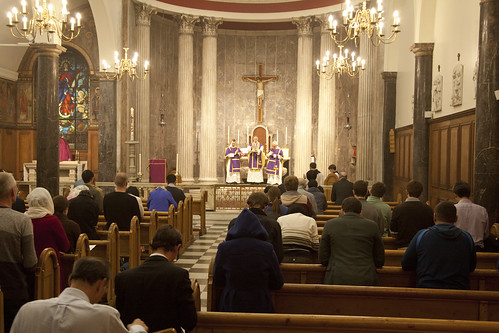
Support the work of the LMS by becoming an 'Anniversary Supporter'.
Tuesday, September 15, 2015
Worries about the arguments for annulment reform
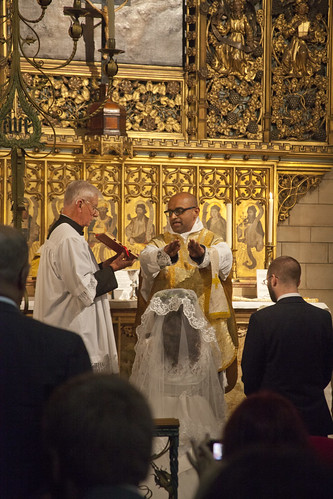 |
| The Blessing of the Bride |
I want to base my own reflections around two mutually inconsistent attitudes which are the hallmark of all too many reforms carried out in the Church since Vatican II, which appear to be present in this reform as well. (I wrote this post before reading Rorate Caeli's translation of excerpts from an article by Msgr. Pio Vito Pinto, the leader of the commission which crafted this reform; the article confirms my observations.)
The first is an impatience with the traditional approach to whatever the issue might be. In this case, the traditional approach places the burden of proof on the side of the validity of a marriage, which has the result that gaining an annulment takes on the appearance of a hurdling race. A petitioner has to prove that the marriage was void; he or she has to seek out grounds, and then evidence for those grounds, and then do it all over again with a second tribunal.
Where the system has been corrupted, of course, these obstacles may not be difficult to overcome, but the procedure still consists of overcoming them one by one. Where it has not been corrupted, then it remains a very real possibility that a petition will be refused even when the marriage is truly invalid, simply because it could not be proved to be invalid: in exactly the same way that a guilty man may walk free from from a criminal court for lack of evidence. But in the case of annulments, it does not appear to be a matter of erring on the side of caution, in that way that not imprisoning people without sufficient evidence counts as erring on the side of caution, but of erring on the side of bloodyminded intransigence. A refused petition is in most cases today a refusal to allow a couple married (or soon to be married) outside the Church to return to (or remain in) good standing and receive the sacraments. Isn't the very possibility of refusing a petition to a person in a marriage which is in reality invalid a horrifying one? Should we not err on the side of the invalidity of the marriages in front of tribunals?
No, of course not. Because the final result desired by petitioners is not, in fact, a declaration of nullity, in almost every case, but a valid marriage - a new one, that is, with a new partner. To place the burden of proof on the side of invalidity is to place a doubt on every single marriage on the face of the earth, including the marriage the petitioner wants to contract as soon as the decree is granted. It is, to this extent, self-defeating.
Monday, September 14, 2015
Vespers of the Dead for the House of Stuart, Wednesday in London
 |
| King James II (of England) and VIII (of Scotland), in exile in France with his family, in 1694. |
From the Royal Stuart Society
By kind permission
of the Right Reverend Keith Newton, Ordinary of the Ordinariate of our Lady of
Walsingham,
and the Reverend Mark
Elliott-Smith, Rector of the Church of our Lady of the Assumption and St
Gregory, Warwick Street
and
under the
patronage of His Grace the Duke of St Albans, the Governor-General of the Royal
Stuart Society,
and
the Chairman, Lord
Aylmer, and the Council of the Royal Stuart Society
Vespers of the Dead
will be sung at
6.30pm
on
Wednesday 16 September 2015
in the
Church of our Lady of the Assumption
and St Gregory
at
Warwick Street, London W1B 5LZ
for the repose of the souls of
King James II and VII, King
James III and VIII
and
the deceased members of the
Royal House of Stuart
the day of death of King
James II & VII of England, Scotland, Ireland and France (de jure)
Chant schola of Corpus Christi Maiden Lane
And of St Bede Clapham Park
[Nearest tube: PICCADILLY CIRCUS]
Marriage and annulment reform
 |
| Christ the Judge |
First thoughts, including the abolition of second instance.
More thoughts, including worries about the effects of the reform.
Lengthy procedures in Argentina
More on the causing of unnecessary doubts about the validity of marriages
Unlike Roberto de Mattei, whose article on the subject can be seen on Rorate Caeli, Peters is not too worried about the abolition of the requirement of 'second instance'. Until now, declarations of nullity have had to be confirmed by another tribunal, which obviously adds to the time and expense of the process. The new rules make this unnecessary.
While I agree with de Mattei that the change is clearly moving things in the direction of taking less seriously the marriage bond, I can see Peters' point as well. Where the canonical procedure is weak, for whatever reason, adding another weak tribunal to the process may do little to help.
Peters identifies three aspects of the reform which really do worry him, and I urge readers to see what he says in detail. They are:
1. Making relevant to the way cases are heard, whether both spouses agree to seek an annulment. Why should it be relevant? The rule will encourage an attitude of conspiring between estranged spouses to get the desired result - or pressure by one on the other to agree, for the sake of a quick result.
2. The rag-bag list of reasons to allow an accelerated procedure, which includes issues related to grounds for nullity such as lack of discretion in making the vows, with issues utterly unrelated, such as 'brevity of marriage', and issues expressed in terribly vague terms. As Peters says, this is going to lead people to have doubts about the validity of their marriages who should not. ('Gosh, I was pregnant when we married; I'd be able to have a quickie annulment. Doesn't that mean there is something wrong with my marriage?')
3. The accelerated procedure itself, which can be undertaken by a bishop assisted by people without any training in Canon Law. Bishops may have the authority, by virtue of their office, to judge cases, but putting them personally in the hot seat without the support of experts is a recipe for disaster.
I want to devote another post to some reflections of my own on this topic.
Support the work of the LMS by becoming an 'Anniversary Supporter'.
Sunday, September 13, 2015
Sat 19th: LMS Pilgrimage to Brinkburn Priory, Northumbria
Saturday, 19th September 2013: Pilgrimage to Brinkburn Priory, Northumberland

High Mass at 12 noon.
The address is Brinkburn Priory, Longframlington, nr Morpeth NE65 8AR.
The priory was once the home of Augustinian canons, who chose this idyllic riverside site in the midst of the beautiful countryside of Northumberland. The priory is situated between the towns of Morpeth & Rothbury.
The Priory Church was re-roofed in Victorian times, and it is possible to have Mass inside it.
Please make a note in your diary as this is a wonderful setting for the EF of the Mass and we are (usually) blessed with lovely sunshine.
Support the work of the LMS by becoming an 'Anniversary Supporter'.

The address is Brinkburn Priory, Longframlington, nr Morpeth NE65 8AR.
The priory was once the home of Augustinian canons, who chose this idyllic riverside site in the midst of the beautiful countryside of Northumberland. The priory is situated between the towns of Morpeth & Rothbury.
The Priory Church was re-roofed in Victorian times, and it is possible to have Mass inside it.
Please make a note in your diary as this is a wonderful setting for the EF of the Mass and we are (usually) blessed with lovely sunshine.
Support the work of the LMS by becoming an 'Anniversary Supporter'.
Thursday, September 10, 2015
Pilgrimage to Glastonbury this Saturday

Reposted: don't miss the chance to visit this ancient holy place. More details here.
Glastonbury Abbey is where you'll find the Holy Thorn, planted by St Joseph of Arimathea, the grave of King Arthur, and the site of martyrdom of the last Abbot, Bl Richard Whiting. Not bad for one place!
This year the Pilgrimage Mass will take place in the ruins of the Abbey itself.
The LMS Pilgrimage to Glastonbury
There will be a Sung Mass in the Extraordinary Form on
Saturday, 12th September 2015 at 11:00 am
in
The Lady Chapel in the Abbey Grounds, Glastonbury
followed by a Rosary Procession, Lunch and then Benediction at 2pm in Our Lady of Glastonbury Church
The Celebrant will be Fr Philip Thomas
The music will be provided by the Rupert Bevan Singers
All are welcome
Tea and coffee will be available afterwards in the Church Hall, please bring a packed lunch
Wednesday, September 09, 2015
New Mass centre: Christ the King, Bedford
The LMS news blog recently carried the story:
We are delighted announce a new regular Sunday Mass, in Christ the King, Harrowden Road, Bedford MK42 0SP. Starting this Sunday (16 August) Low Mass will be celebrated at 8.30 am.
This Mass is organised by Justin Bozzino and Eric Friar, with whom you should check for confirmation if travelling, as priests have not as yet been confirmed for all ongoing dates. Justin can be reached on 07884 001977 and Eric Friar on 07792 766103.
In fact the rota of priests to say EF Masses in Christ the King is now confirmed and numbers have increased from the first celebration photographed below.
 |
| The Traditional Mass in Christ the King, Bedford |
Tuesday, September 08, 2015
Young Catholic Adults weekend
This happens every year, and is very worthwhile; I'm very happy to post the details here.
YCA National Weekend at Aylesford - 31st Oct 1st Nov 2015. Bookings Now Being Taken
Sunday, September 06, 2015
Walsingham 2015: Third Day and epilogue
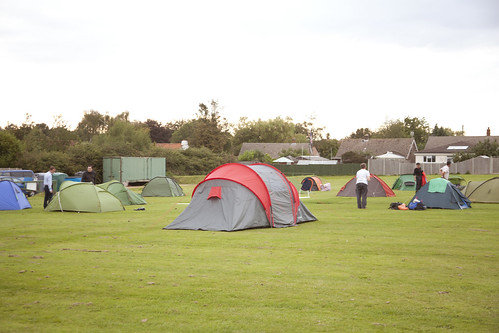
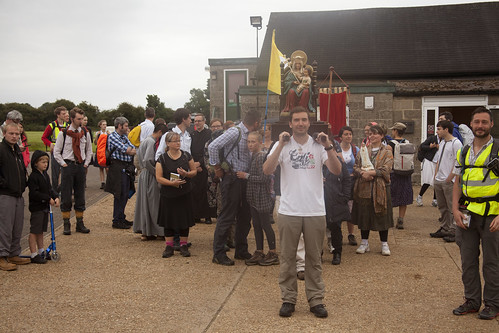
The start of the third day, Sunday, is exciting, since having walked about 20 miles the day before we have only about 11 miles aheard of us. The sky was a bit overcast, which was a relief after the sun of Saturday. On the final day we carry the processional statue of Our Lady of Walsingham.
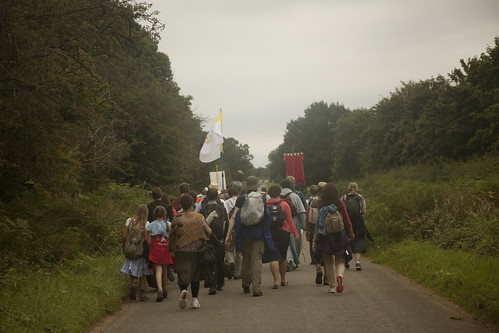
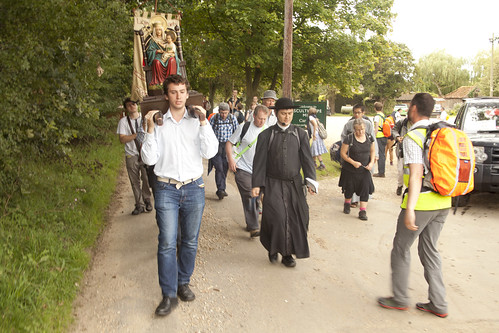 |
| Leaving from our (early) lunch stop. |
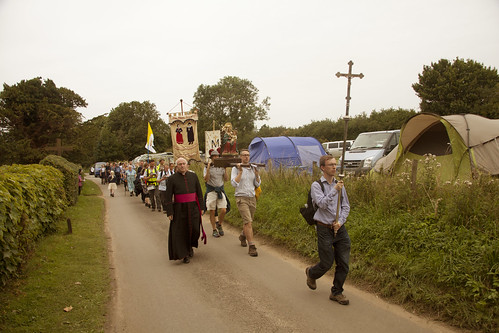 |
| Arriving in the Shrine with the Director, Mgr John Armitage. |
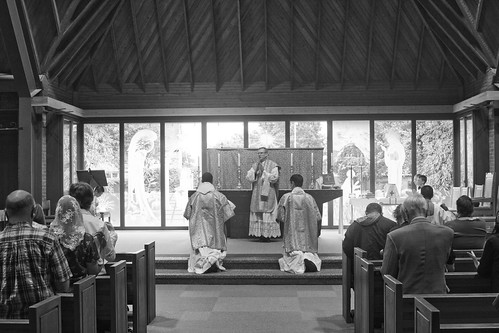 |
| High Mass in Reconciliation Chapel. The contrast of daylight coming from behind the Altar and orange arc lamps in the ceiling mean that black and white photography looks a lot less strange than colour. |
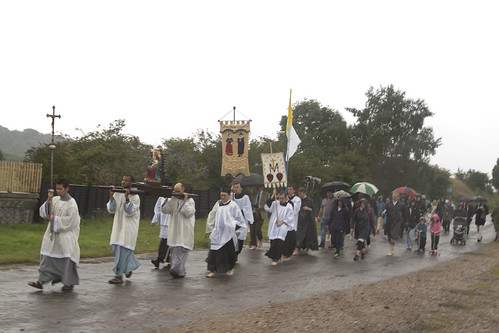
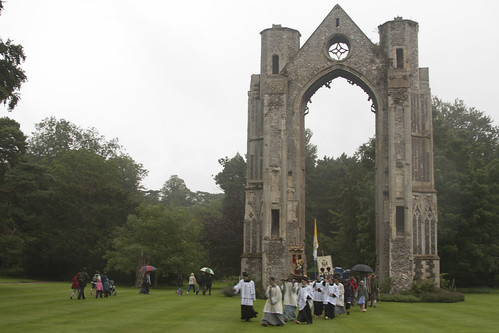
Veneration of our statue of Our Lady of Walsingham and blessing from our chaplains concluded the formal part of the pilgrimage, but we also have a sung Mass on Monday morning in the medieval Slipper Chapel, which forms the heart of the Catholic Shrine.
]
Support the work of the LMS by becoming an 'Anniversary Supporter'.
Saturday, September 05, 2015
Walsingham 2015: Second Day
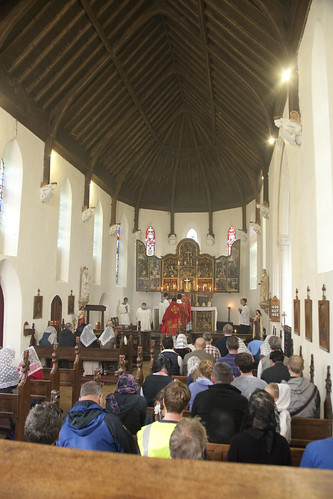 |
| The chapel at Oxburgh Hall. |
 |
| Mass celebrated by Fr John Cahill, with Fr Michael Rowe as deacon and Br Rosario of the Marian Franciscans at Gosport as subdeacon. |
Friday, September 04, 2015
Walsingham 2015: First Day
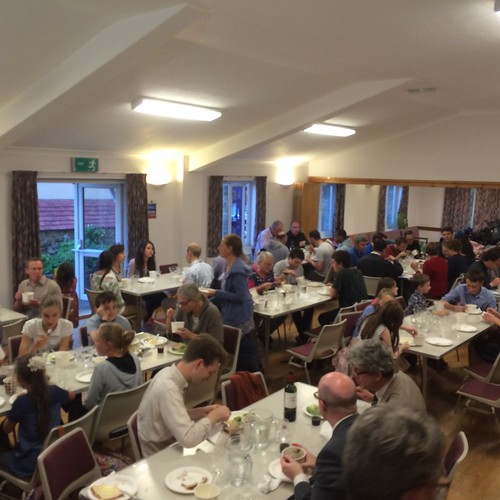 |
| Dinner in Ely: Cock-a-leekie soup. |
 |
| High Mass in St Etheldreda's, Ely, celebrated by Fr Michael Rowe, EF Chaplain in Perth, Australia |
Thursday, September 03, 2015
Transsexual lifestyle 'not in accord with the Faith'
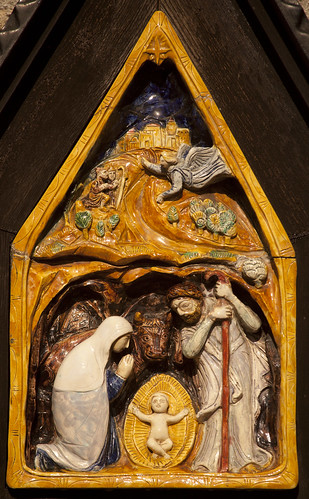 This is a tremendously important clarification from the Congregation for the Doctrine of the Faith, reported and translated by Rorate Caeli, where there is more background.
This is a tremendously important clarification from the Congregation for the Doctrine of the Faith, reported and translated by Rorate Caeli, where there is more background.The CDF was asked by the Bishop of Cadiz about whether a transsexual could be a godparent. To be a godparent, according to Canon Law, one must, among other things, be someone who
'leads a life of faith in keeping with the function to be taken on'. [Canon 874]
This might seem a subjective matter, but as far as refusing to allow a person to be a godparent it must be determined by objective, which is to say public, things, and so parallels the issue of being allowed to receive Holy Communion, to which it is often linked. Catholics in irregular marriages, for example, can't be godparents. The CDF now tells us that the same is true of transsexuals: those who have adopted the lifestyle of the opposite sex.
The CDF, responding to the question 'can it be allowed?', replied as follows.
"Regarding this particular [issue], I inform you of the impossibility that it be admitted. The transsexual behaviour itself reveals, in a public manner, an attitude that is opposed to the moral demand of resolving one's own problem of sexual identity according to the truth of one's own sex. Therefore, it is evident that this person does not possess the requisite of leading a life according to the faith and to the position of godfather (CIC [Code of Canon Law] Can 874 §3), not being able, therefore, of being admitted to the position either of godmother or of godfather. Discrimination is not to be seen in this, but only a recognition of an objective lack of the requisites that by their own nature are necessary to take over the ecclesial responsibility of being a godparent."
I've done a post about the arguments surrounding transsexuality on my philosophy blog here.
Support the work of the LMS by becoming an 'Anniversary Supporter'.
Wednesday, September 02, 2015
Walsingham Pilgrimage: pictures
 |
| Dinner on Thursday evening |
 |
| Early Mass in Ely: St Ethelreda's, Friday |
Subscribe to:
Comments (Atom)








